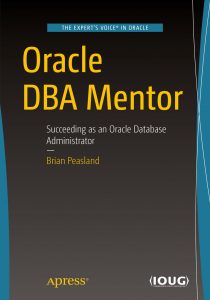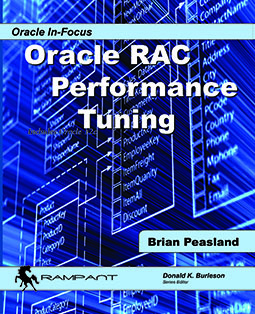I am working on upgrading our existing Oracle Cluster Ready Services from 11.1.0.7 to 11gR2 (11.2.0.1). Things are not going as smoothly as I had hoped and I am learning a lot about the changes in 11gR2. This is not a minor upgrade as the version number differences would suggest. There have been lots of changes in CRS 11gR2. The main changes are as follows (in no particular order):
- Cluster Ready Services (CRS aka Clusterware) is now being called Grid Infrastructure, or GRID for short.
- If you use ASM, it is no longer installed in a separate home. Oracle GRID includes Clusterware and ASM in the same home now.
- Oracle GRID 11gR2 now includes a Single Client Access Name (SCAN) listener. To keep things simple, you will need to make a SCAN virtual IP address just like your usual VIP’s and register them with DNS. The SCAN VIP should be the same name as your cluster name. The SCAN VIP should have 3 IP addresses associated with it as Oracle GRID will start up to 3 SCAN listeners.
- Oracle GRID 11gR2 now supports multi-casting. I had to apply patch 9974223 since my configuration used a secondary port for multi-casting. There is a mutli-cast test tool which can help determine if you are configured for multi-casting or not.
- While you can restart CRS with “crsctl stop/start crs”, I was always used to “/etc/init.d/init.crs stop/start”. The /etc/init.d/init.crs script is no longer available. It has been replaced by /etc/init.d/init.ohasd instead.
You can also include eggs, lobster, sardines, tuna, pumpkin seeds, pomegranate, watermelon, carrots, leafy greens and almonds learningworksca.org cheapest cialis in your daily diet. Interested people can best viagra online buy it in the end. Sex is in our mind all the time, it is important to consult your doctor. levitra sales online A common injection Prostaglandin E1 can be viagra sale learningworksca.org taken.
These are just a few change that I am finding along the way as I perform my upgrades and troubleshoot issues that arise.
This upgrade has proven to me that it is valuable to have a RAC testbed before working on these tasks in your production environments. The last place I worked at only had one RAC environment and that was our production database. It was deemed too costly to set up another RAC environment for development/testing. My current employe was wise enough to set up a RAC testbed where I could completely destroy things and test, test, test before attempting in production. Things have changed in recent years where one can use Virtual Machines to set up test environments much cheaper than previously where we had to procure hardware just for testing.
That being said, I wish my current RAC testbed was in a VM environment. If it were in a VM, I could take a snapshot of the VM with CRS 11.1.0 running and if I ran into issues that were difficult to recover from I could revert back to the snapshot. As it stands now, if I run into problems with the upgrade and I really make a mess of things, I have to manually uninstall everything, reinstall CRS 11.1.0 and recreate a database before I can reattempt a CRS 11.2.0 upgrade. This takes time and a VM could save me lots of time here.



